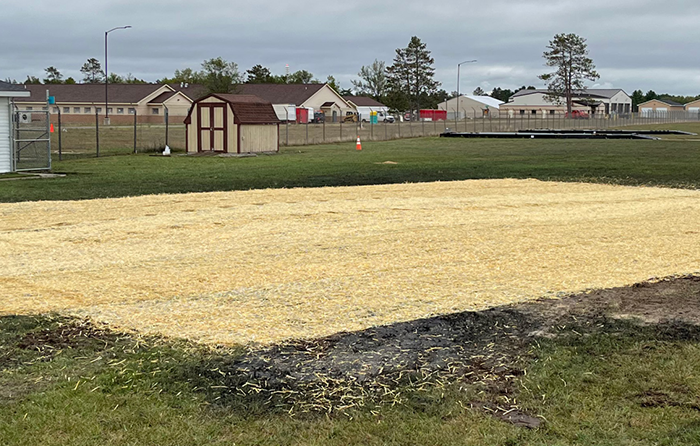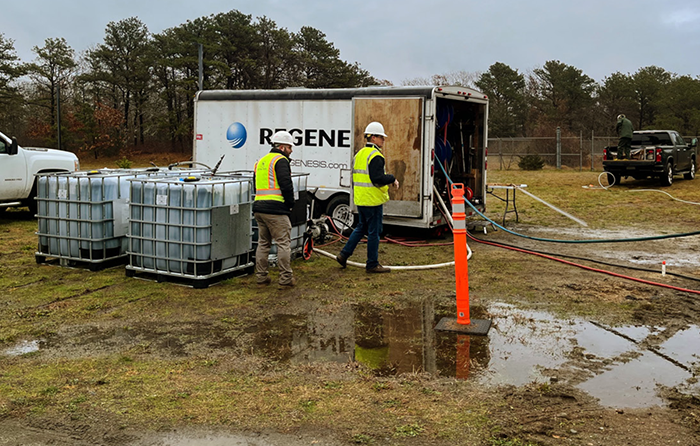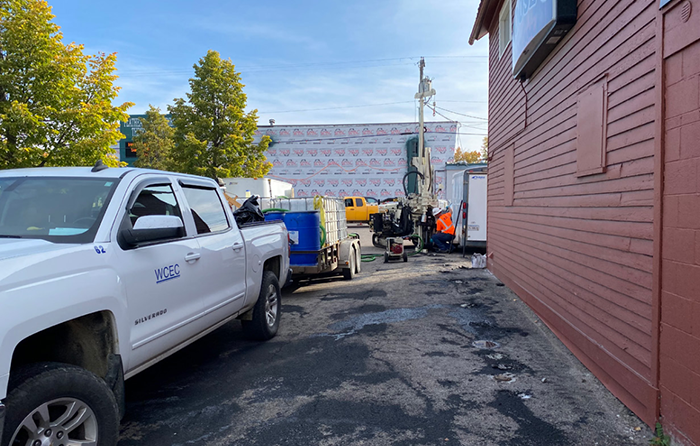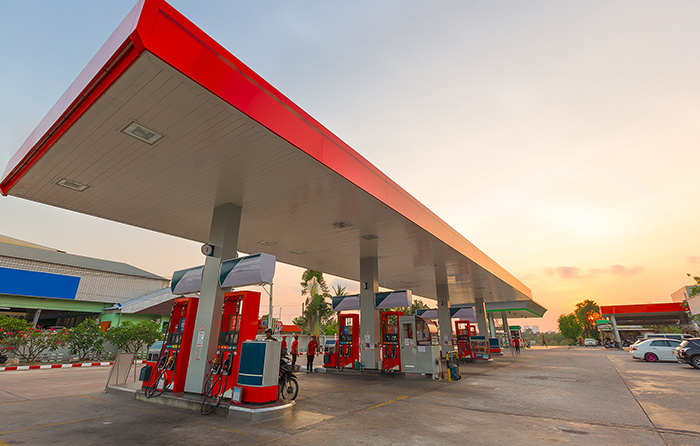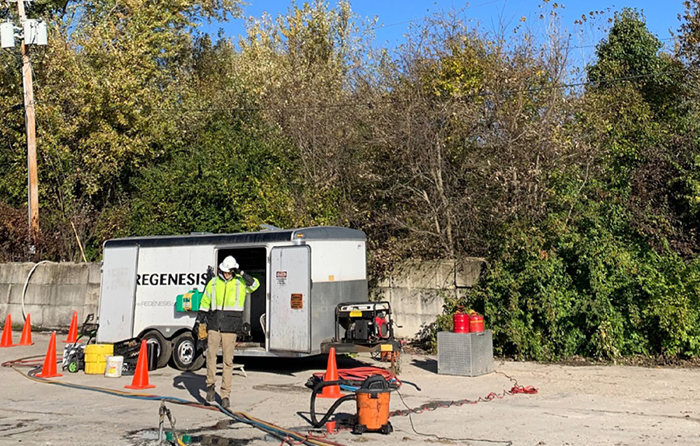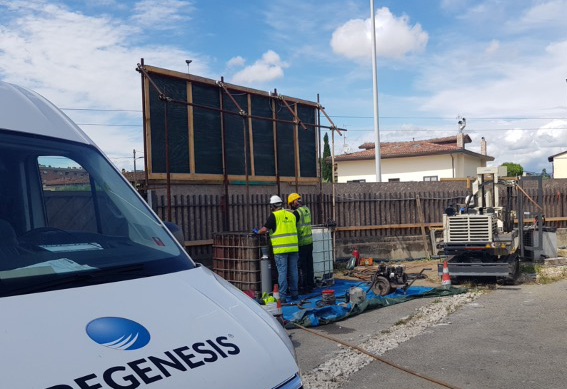Sustainable and Low-Cost PFAS Source Treatment
Pilot Studies incorporating SourceStop horizontal barrier treatments demonstrate reduction of leaching
This case study reviews the in situ treatment of PFAS source zones at firefighting training areas on two aviation sites where PFAS-containing AFFF was historically discharged. Pilot tests at both sites demonstrated PFAS soil leachate concentrations has been reduced by >99% following the source zone treatments.
The PFAS source treatments applied site-specific amendment blends of SourceStop, a new concentrated form of colloidal activated carbon, in conjunction with powdered activated carbon. SourceStop is a micron scale aqueous carbon suspension emplaced as a horizontal PFAS barrier at the base of the target treatment zones to improve remediation effectiveness dramatically. In controlled laboratory studies, SourceStop has been proven to prevent PFAS leaching with >10x more effectiveness than powdered activated carbon alone.
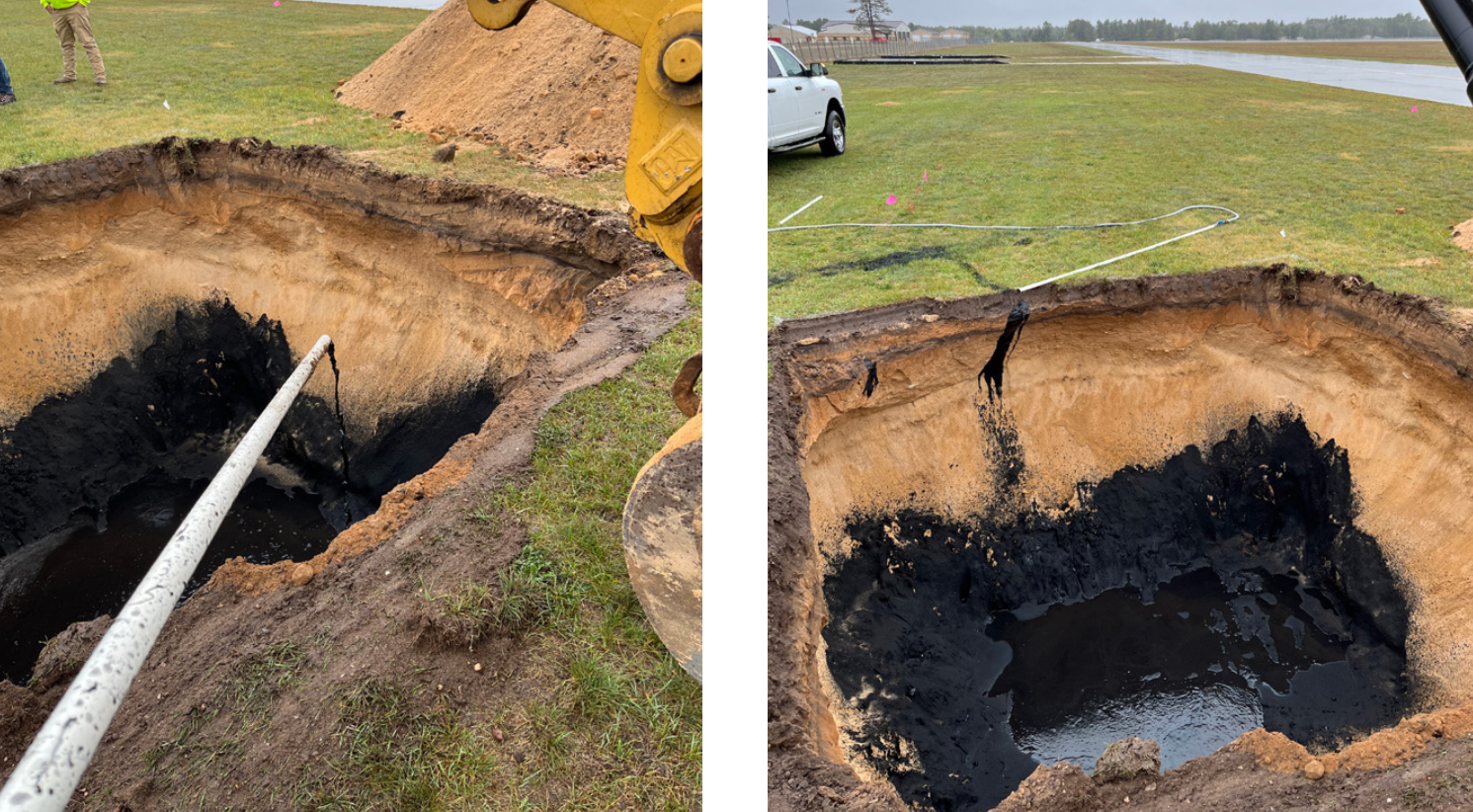
Case study highlights:
- In situ PFAS source treatments using SourceStop® immediately halt PFAS plume development and prevent impacts to downgradient receptors
- SourceStop approach is a sustainable remediation alternative compared to other mechanical and physical PFAS treatment methods
- Enhanced attenuation removes unacceptable PFAS exposure risk at a low cost
6m 33s reading time
Martha’s Vineyard Airport Successfully Treated Using PlumeStop to Eliminate PFAS Risk
This case study reviews a site at Martha’s Vineyard Airport where a PlumeStop barrier was used to treat PFAS. In less than four months, PlumeStop has eliminated PFAS mass flux immediately downgradient of the barrier and significantly reduced PFAS concentrations further away, as monitoring continues. The cost-effective and sustainable solution to remove PFAS exposure risk provides an alternative to expensive and ineffective pump & treat (P&T) systems.
Tetra Tech, a global environmental consulting firm, has worked with Martha’s Vineyard Airport over the years, addressing a dry-cleaning solvent release and other environmental issues at the site. At the request of the airport, Tetra Tech conducted an initial, preemptive PFAS assessment in 2018, confirming the presence of PFAS, commonly known as “forever chemicals” in groundwater. The remediation goal was to stop further PFAS movement away from the site. Tetra Tech opted for an in situ remediation approach. A PlumeStop injected permeable reactive barrier (PRB) was installed to passively filter PFAS out of groundwater, sorbing the contaminants onto the aquifer matrix and preventing further plume migration.

Case study highlights:
- Cost-effective in situ approach addresses PFAS risk, with no greenhouse gases or hazardous waste produced
- Contaminant flux measurements were obtained using FluxTracer, informing the PlumeStop dose required in the barrier to achieve the treatment objective
- Early performance data show PFAS mass flux eliminated downgradient of PlumeStop barrier, as monitoring continues
7m 16s reading time
Achieving site closure for a large PCE plume in urban area
This case study reviews a former dry cleaner site in a town in Indiana, USA, where site regulatory closure was achieved after a large dissolved-phase PCE groundwater plume was successfully treated using PlumeStop, enhanced reductive dechlorination (ERD) amendments and S-MicroZVI from REGENESIS. Patriot Engineering, a leading environmental consulting firm, specified ERD as the most practical and economically viable method to effectively treat the large plume.
Patriot’s strategy to achieve closure was to significantly reduce the PCE plume and then to demonstrate plume stability through post-remediation monitoring. By combining remediation technologies from REGENESIS with a highly efficient and cost-effective remediation design, Patriot’s treatment approach eliminated the PCE plume. Subsequent performance monitoring and analysis completed by Patriot demonstrated plume stability, earning the site a No Further Action status from the state regulator.

Case study highlights:
- Closure achieved for a large chlorinated solvent plume in an urban area
- A challenging site: located in an urban area with access limitations
- PCE sources rapidly eliminated and plume efficiently treated using a suite of REGENESIS in situ remediation technologies
11m 14s reading time
PetroFix achieves rapid and sustained MTBE reductions below target levels
This case study reviews a successful PetroFix application that placed a Washington underground storage tank (UST) site on track for closure, while saving more than €900,000 in comparison to alternate approaches considered at the site.
The site is a former service station and bulk petroleum plant, where petroleum hydrocarbons were discovered leaking from USTs in the late 1990s. WCEC, an environmental consulting company highly experienced in addressing petroleum-contaminated sites, investigated the site and observed light non-aqueous phase liquids (LNAPL or free product). In response, WCEC completed interim remedial measures, including excavating grossly impacted soils and installing a free product recovery system… Download the case study to learn how a successfull application of PetroFix got the site on track for closure.
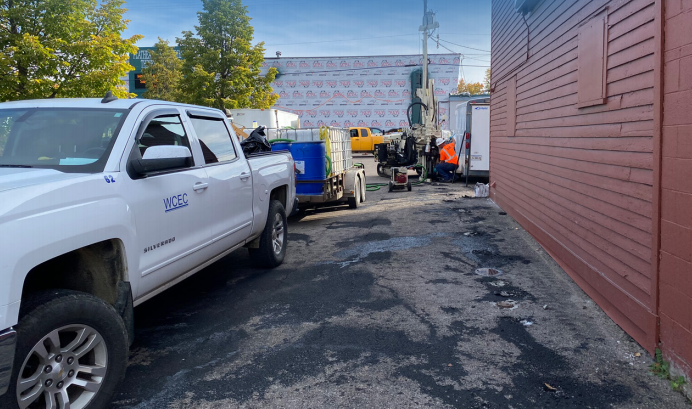
Case study highlights:
- PetroFix achieved rapid and sustained MTBE reductions below cleanup objectives
- At only 8% of the cost of a ‘monitoring-only’ approach, PetroFix saved approximately €1 million for this project
4m 38s reading time
PetroFix Project Experience in Europe and the UK
This document provides an overview of our Petrofix® project experience across Europe and the UK.
PetroFix offers a cost-effective, in situ treatment for petroleum hydrocarbon contamination. It has been used at more than 600 sites to date, across 15 countries worldwide. Applications listed include different project types, such as petrol filling stations, rail depots, active industrial manufacturing facilities, brownfield and oil spill sites, in varying geologies and contaminant concentrations.
2m 48s reading time
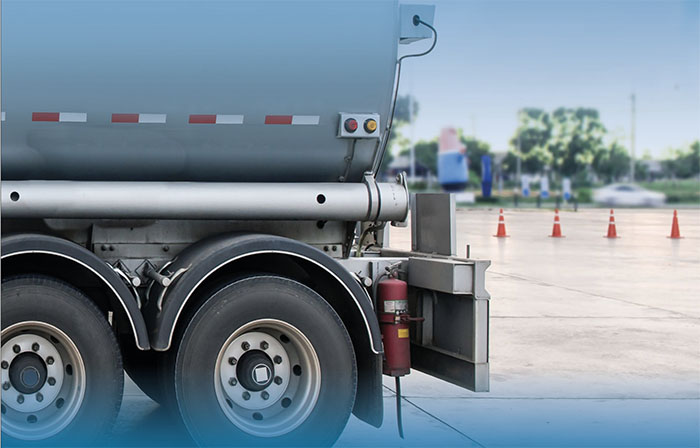
Proven, Rapid, and Cost-Effective Petroleum Spill Treatment
The case studies included in this multi-site review include sites where one of Canada’s largest and most experienced environmental remediation services companies InSitu Remediation Services Ltd. (IRSL) effectively used PetroFix in achieving site closures across Canada. IRSL relies on the technology as an effective, low-cost, and more sustainable remedial solution. As one of the first to apply PetroFix in the field, IRSL has deployed the PetroFix technology to remediate a large number of TPH-contaminated properties, with land use ranging from gasoline stations and commercial properties to residential homes and a national park lodge. PetroFix has quickly eliminated TPH impacts in groundwater at these sites and prevented contaminant movement away from impacted properties, thus eliminating potential human exposure to TPH and protecting pristine, ecologically sensitive surface waters.
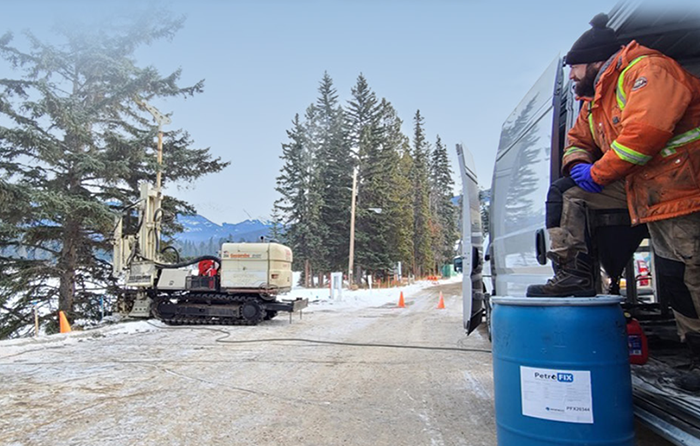
Case study highlights:
- Nine sites IRSL treated with PetroFix have already achieved closure, most within one year after a single injection event
- PetroFix chosen at UNESCO World Heritage site due to sensitivity of a pristine water body at the site, offering a less disruptive approach to address TPH
- Site remedies have led to significant cost savings for IRSL’s clients and demonstrated PetroFix as a viable means for treating TPH-contaminated sites in Canada
Cost-effective In Situ Remediation of Chlorinated Solvents in Svenljunga, Sweden
Cost-effective In Situ Remediation of Chlorinated Solvents in Svenljunga, Sweden
In situ remediation of groundwater impacted with Trichloroethylene (TCE) was completed at a former fur factory in Svenljunga, Sweden, as it had been determined that excavation or thermal treatment would have been too expensive. A targeted application of 3-D Microemulsion® was performed using direct push technology (DPT) to complete the injections. Validation sampling showed that the concentrations in the groundwater and soils had been reduced by approx. 95%, to well below the remedial targets.
2m 31s reading time
About the Remediation Technology
3-D Microemulsion (3DME) is an engineered electron-donor emulsion that offers a steady and long-term source of staged-release hydrogen (in the order of 4 to 5 years from a single application) to enhance the reductive dechlorination (ERD) of chlorinated compounds. It has been optimized to distribute widely upon injection, allowing for high volume applications, reducing the number of injection points and events required onsite. Click the logo to learn more about how 3DME works.
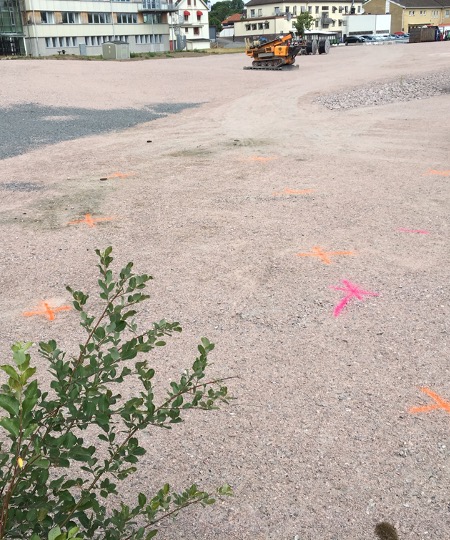
Reducing Time and Cost-to-Closure at UST Release Sites
A multi-site case study
In recent years, environmental consulting firm BJAAM has been using PetroFix® to eliminate risks and obtain regulatory closures at petroleum hydrocarbons impacted UST sites. In this multi-site review we have included 6 sites where BJAAM effectively used PetroFix in support of their risk-based corrective action site closure strategy.
Highlights:
- Site closure achieved at four sites, with the other two eligible for site closure imminently
- Site outcomes have led to significant cost savings for BJAAM’s clients and gained confidence from state UST regulatory agencies in the US.
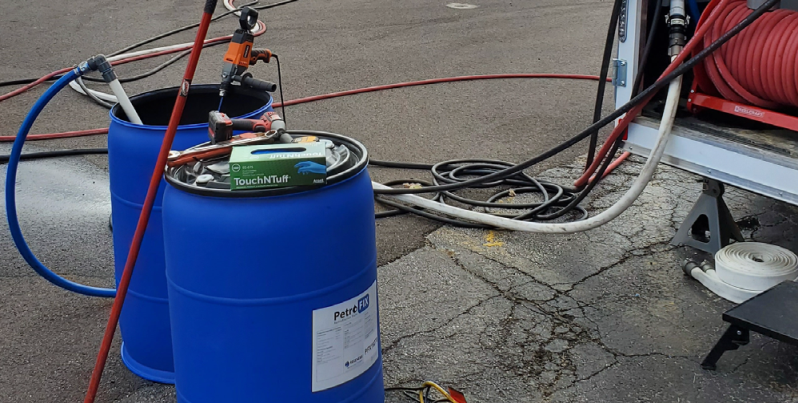
Reductive Dechlorination Approach Treats Large Chlorinated Solvent Plume
Case study highlights:
- Innovative combined remedy on active site effectively eliminates risk to adjacent property
- Remedy from REGENESIS chosen based on proven effectiveness in treating similar large CVOC plumes
- Design Verification Testing and placement validation guide a successful remedial application
This case study reviews the successful in-situ treatment of chlorinated solvents at a former food processing plant located in a suburb south of Indianapolis. PlumeStop, S-MicroZVI, 3DME and BDI Plus were used in combination to strongly inhibit CVOC plume migration near the site property boundary while enhancing abiotic and biotic degradation of CVOCs at this location and in the upgradient plume area. Patriot Engineering and Environmental, Inc. (Patriot), a leading consulting firm based in Indianapolis, investigated the site, discovering contaminants had migrated from an unidentified source and formed a large plume. In addition, it was found that the plume was being pulled toward a former (now inactive) public water supply well. The primary chlorinated volatile organic compounds (CVOCs) detected in the plume were tetrachloroethene (PCE), trichloroethene (TCE), and cis-1,2-dichloroethene (cis-DCE).
Injectable PRB provides rapid remediation of chlorinated plume allowing redevelopment within months
Stringent regulatory targets achieved in short timescale, despite challenging site conditions
Historical industrial activities at a former silver frames manufacturing facility in Central Italy had caused chlorinated solvent contamination in the subsurface, which was extending beyond the site boundary. As the site was undergoing redevelopment into residential buildings, the construction company had a strict deadline for remediation to be completed and so a strategy was needed to avoid the long-term installation of active pumping equipment onsite.
Highlights:
- An in situ permeable reactive barrier (iPRB) was installed combining PlumeStop, S-MicroZVI and BDI Plus reagents
- Additional Design Verification Testing (DVT) was completed by REGENESIS prior to full-scale works
- Remediation targets and the client’s economic requirements were achieved on time and within budget, under a guaranteed contract
4m 44s reading time
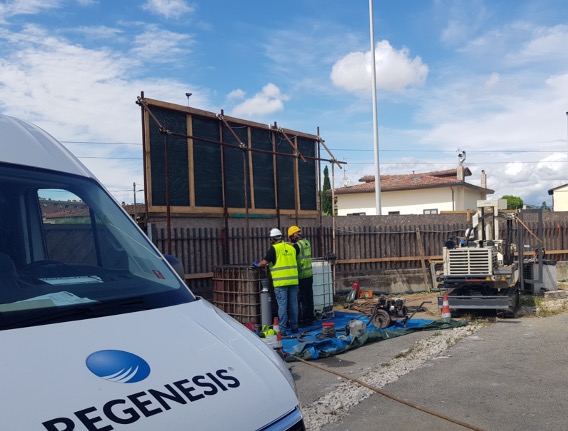
“REGENESIS has been supportive throughout all the steps, starting before our remediation design with the remedial investigation activities. Their input was crucial to identify how to best design the treatment and resulted in a very straightforward project for my client, meeting goals in a timely manner, without any surprises.”
Alessandro Lucchesini, Technical Manager, CECAM
a.lucchesini@cecamsrl.it | +39 335 835 05588

 Americas
Americas Europe
Europe Français
Français Deutsch
Deutsch Italiano
Italiano Español
Español